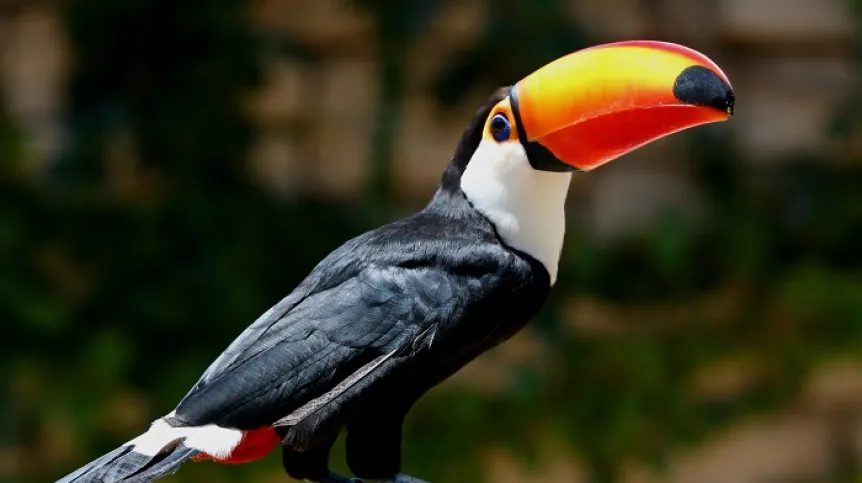
In warmer climates, in the course of evolution birds lengthen their legs and beaks and, in a separate process, reduce body size. Scientists from Poland and Australia investigated the interdependencies between these mechanisms on 99.7% species of birds.
Birds use many thermoregulation mechanisms. They may not be able to sweat like humans, but when it gets hot, they pant to cool down, they can take invigorating baths, hide in cool shelters, run or fly (then they are cooled down by air). On frosty days, they do not shiver from the cold - like mammals do - (generating heat in their muscles), but they ruffle their feathers, avoid movement, hug other individuals, hide their beaks and legs under the feathers, and hide in warm nests.
However, when the problem is not weather anomalies, but the climate that we have to deal with throughout our lives, certain trends in evolution become visible. They enable subsequent generations to better cope with the ambient temperature.
Such principles that apply to mammals and birds are Allen's rule and Bergmann's rule, which have been known for decades. Both of them are based on the observation that the bodies of warm-blooded animals acts as heat sinks - they radiate the heat from into the surroundings. When the environment is often hot, the body must be able to get rid of heat easily. And when it is cold for most of the year, the body must effectively block the loss of heat.
Bergmann's rule is that in warmer climates, evolution often leads to a reduction in body size (because is easy to cool a small body). And in cold climates - to increase size (because a large body maintains a high temperature more easily in the cold). This is why there is a great wealth of species of tiny birds in the tropics, including hummingbirds. And large albatrosses (and among mammals - walruses and elephant seals) are more common in cold zones.
Allen's rule, in turn, concerns the evolutionary changes that affect the peripheral parts of the body (appendages). In the case of birds, these are featherless body parts: beaks and legs (and in the case of mammals - limbs, tail, neck, ears). These are the parts of the body through which most heat escapes. Therefore, birds in warm climates tend to have larger beaks (e.g. tropical toucans) and longer legs (ostriches). In turn, in cold climates, birds tend to reduce the size of their beaks (an example is the small beak of the snowy owl) and shorten their legs (short legs make the gait of penguins so characteristic). The same is true for mammals.
Although both rules have been known for a long time and each individually researched, Dr. Arkadiusz Fröhlich from the Institute of Nature Conservation of the Polish Academy of Sciences and his team decided to investigate how these trends relate to each other and how they interact. Researchers analysed data on the occurrence and dimensions of nearly all, 9,962 bird species (out of approximately 10,000). Their research results were published in Nature Communications.
He said: ’We used evolutionary models, so we did not directly compare, for example, sparrows with ducks, but birds within so-called families, i.e. species related to each other. For example, how body sizes, beak and leg proportions differ in Anatidae inhabiting different climatic zones. Or how individual dimensions differ between sparrows from different parts of the world', the researcher explains. This made it easier to notice the relative differences that appear relatively quickly due to climatic differences.’
Research has shown that a compromise between the rules is possible. Large birds (e.g. ostriches) occur in warm climates, which at first glance contradicts Bergmann's rule. This is possible, among other things, because in the course of evolution, these birds found a good thermoregulation mechanism: in subsequent generations, they gradually lengthened their legs and neck.
In turn, small species are found in cold climates. This is possible, among other things, because they usually have a small beak and short legs in relation to their body size. By applying Allen's rule, it is possible to explain why animals 'break' Bergmann's rule.
In cold climates there are birds with large beaks and long legs (e.g. storks). However, they have a large body size, so on cold days they are able to compensate for heat loss through peripheral parts of the body.
Research has shown that Allen's and Bergmann's rules work together. 'And if you take into account the interactions between them, they can explain 20 percent of the variability between species. The rules related only to thermoregulation are therefore quite important, but they are only a part of the processes that make animals so different from each other,’ Dr. Fröhlich said.
The researcher explains that confirming the interaction between Allen's and Bergmann's rules in almost all birds also sheds new light on the evolution of many species of mammals. Giraffes are an example: although they are huge animals, they inhabit warm climates thanks to the fact that in the course of evolution they lengthened the peripheral parts of their bodies, i.e. the neck and legs, through which they release excess heat more quickly.
Dr. Fröhlich does not rule out that the interaction of these principles may also shed new light on the evolution of primates, including humans. He said: ’We can learn something about ourselves on the example of animals.’
PAP - Science in Poland, Ludwika Tomala
lt/ bar/ kap/
tr. RL













